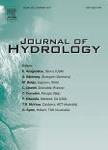版权所有:内蒙古大学图书馆 技术提供:维普资讯• 智图
内蒙古自治区呼和浩特市赛罕区大学西街235号 邮编: 010021

作者机构:Yamanashi Univ Dept Civil & Environm Engn Kofu Yamanashi 400 Japan Int Ctr Water Hazard & Risk Management Tsukuba Ibaraki 3058516 Japan
出 版 物:《JOURNAL OF HYDROLOGY》 (水文学杂志)
年 卷 期:2008年第357卷第3-4期
页 面:188-206页
核心收录:
学科分类:08[工学] 0708[理学-地球物理学] 081501[工学-水文学及水资源] 0815[工学-水利工程] 0814[工学-土木工程]
基 金:Ministry of Education, Culture, Sports, Science and Technology (MEXT) of Japan 21st Century Centre of Excellence (COE), University of Yamanashi
主 题:conceptual rainfall-runoff models multi-objective calibration model parameters parameter uncertainty regionalisation
摘 要:In this paper, we present a method to account for modeling uncertainties while regionalising model parameters. Linking model. parameters to physical catchment attributes is a popular approach that enables the application of a conceptual model to an ungauged site. The functional relationship can be derived either from the calibrated model. parameters (direct calibration method) or by calibrating the functional. function (regional. calibration method). Both of these approaches are explored through a case study involving TOPMODEL and a number of small- to medium-sized humid basins located in various geographic and climatic regions around the globe. The predictive performance of the functional relationship derived using the direct calibration method (e.g., multiple regression, artificial neural. network and partial least square regression) varied among the different schemes. However, the average of the model. parameters estimated from regionatisation schemes based on direct calibration is found to be a better surrogate. Even with the use of a parsimonious hydrological model and with posing model calibration as a multi-objective problem, the model. parameter uncertainty and its effect on model. prediction were observed to be high and varied among the basins. Therefore, to avoid the effect of model parameter uncertainty on regionalization results, a regional calibration method that skips direct calibration of the hydrological model was implemented. This method was improved in order to take into account multiple objective criteria white calibrating regional parameters. The predictive performance of the improved regional calibration method was found to be superior to the direct calibration method, indicating that the identifiability of model parameters has an apparent effect on deriving predictive models for regionalisation. However, the regional calibration method was unable to uniquely identify the regional relationship, and the modeling uncertainties quantified using Par